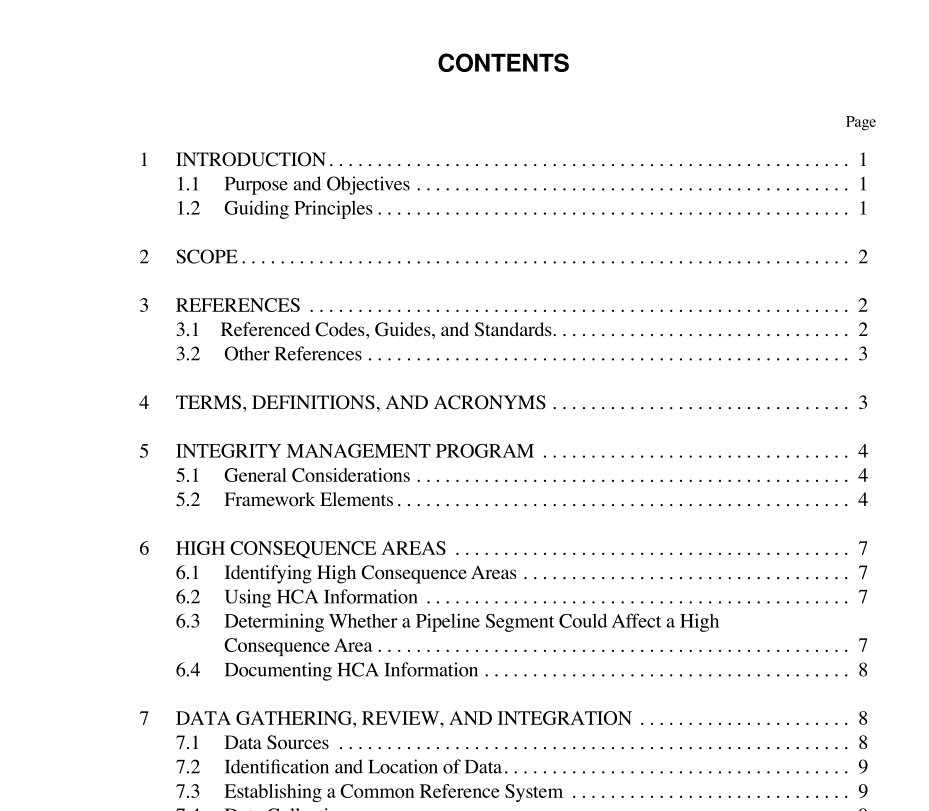Api Std 1160 pdf download

Api Std 1160 pdf download.Managing System Integrity for Hazardous Liquid Pipelines
Integrity must be built into pipeline systems from initial planning, design, and construction. Integrity management of a pipeline starts with the sound design and construction of the pipeline. Guidance for new construction is provided in a number of consensus standards, including ASME B31.4, as well as the pipeline safety regulations. As these standards and guidelines are applied to the design of a pipeline, the designer must consider the area the pipeline traverses and the possible impacts that the pipeline may have on that area and the people that reside in its vicinity. New construction is not a subject of this standard, but the design speciÞcations and as-built condi- tion of the pipeline provide important baseline information for an integrity management program. System integrity is built on qualified people , using defined processes to operate maintained facilities . The integrity of the physical facility is only part of the complete system that allows an operator to reduce both the number of incidents and the adverse effects of errors and incidents. The total system also includes the people that operate the facility and the work processes that the employees use and follow. A comprehen- sive integrity management program should address people, processes, and facilities. An integrity management program must be flexible. An integrity management program should be customized to sup- port each operatorÕs unique conditions. Furthermore, the pro- gram must be continually evaluated and modiÞed to accommodate changes in the pipeline design and operation, changes in the environment in which the system operates, and new operating data and other integrity-related information. Continuous evaluation is required to be sure the program takes appropriate advantage of improved technology and that the program remains integrated with the operatorÕs business practices and effectively supports the operatorÕs integrity goals.
Preparing for and conducting a risk assessment is a key element in managing pipeline system integrity. Risk assess- ment is an analytical process through which an operator determines the types of adverse events or conditions that might impact pipeline integrity, the likelihood that those events or conditions will lead to a loss of integrity, and the nature and severity of the consequences that might occur fol- lowing a failure. This analytical process involves the integra- tion and analysis of design, construction, operating, maintenance, testing, and other information about a pipeline system. Risk assessments can have varying scopes, varying levels of detail, and use different methods. However, the ulti- mate goal of assessing risks is to identify and prioritize the most signiÞcant risks so that an operator can make informed decisions about these issues. Assessing risks to pipeline integrity is a continuous pro- cess. Analyzing for risks in a pipeline system is an iterative process. The operator will periodically gather additional information and system operating experience. This informa- tion should be factored into the understanding of system risks. As the signiÞcance and relevance of this additional information to risk is understood, the operator may need to adjust its integrity plan accordingly. This may result in changes to inspection methods or frequency, or additional modiÞcations to the pipeline system in response to the data. As changes are made, different pipelines within a single oper- ating company and different operators will be at different places with regard to the goal of incident-free operation. Each pipeline system and each company will need speciÞc goals and measures to monitor the improvements in integrity and to assess the need for additional changes. Mitigative actions are taken for injurious defects. Opera- tors should take action to address integrity issues raised from assessments and information analysis.









